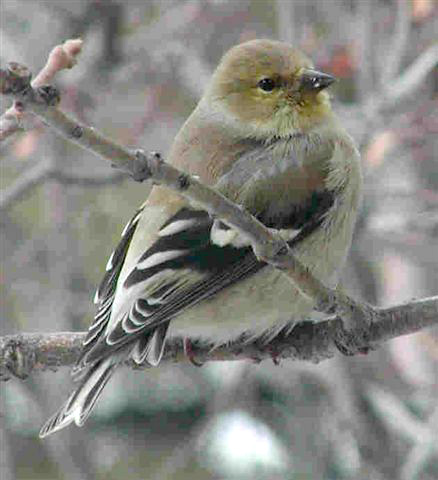 |
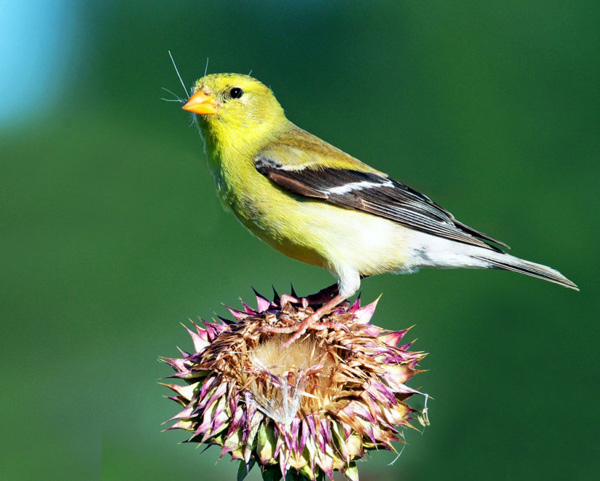 |
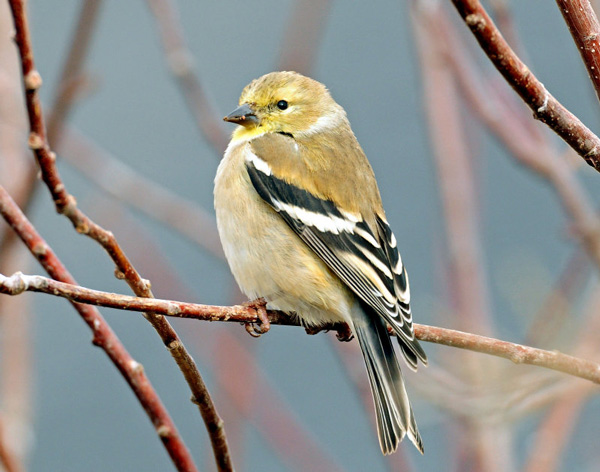 |
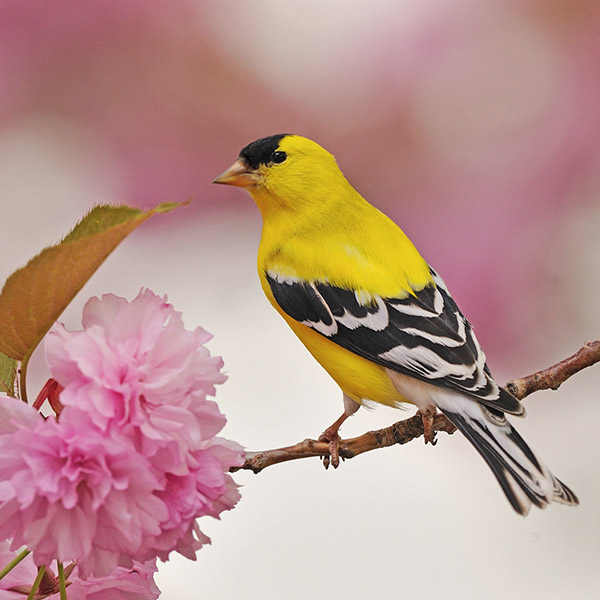 |
|
Winter Female |
→
→
→
Breeding Female |
Winter Male
→
→
→ |
Breeding Male |
|
|
They are molting, to some extent, a
great part of the year: They have to change to a more
obscure plumage in the Winter to preserve their lives from
predators, but in the Spring and Summer they make a dramatic color
change to attract a mate and preserve the species -- they are taking a very
big chance with potential predators for the good of the species!
Both the male and the female make the change but
because the
female gets to choose who she mates with -- she can be very picky -- so the male goes all
out to win her over, including a very impressive black top hat and
outrageously yellow body feathers.
|
The sequence goes something like this:
|
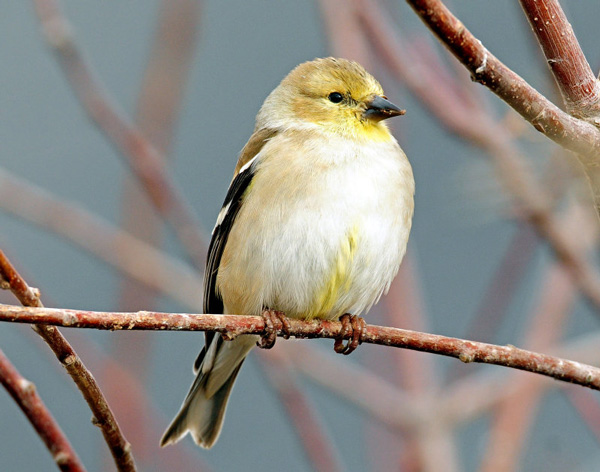 |
Male American Goldfinch
in December, by Paul Higgins
©Paul Higgins
Notice the dark bill.
(Signs of the previous Spring molt are almost all gone by
December).
|
 |
Non-breeding
Female in January, by Marlene Foard
©Marlene Foard
They don't have the leaves to hide behind in the Winter, so
their winter plumage is
more subdued and less obvious to their predators so they can
survive to breed the next Summer.
|
 |
Male Am. Goldfinch
in December by Paul Higgins
©Paul Higgins
The first changes start in the face and head and proceed
tail-ward from there.
|
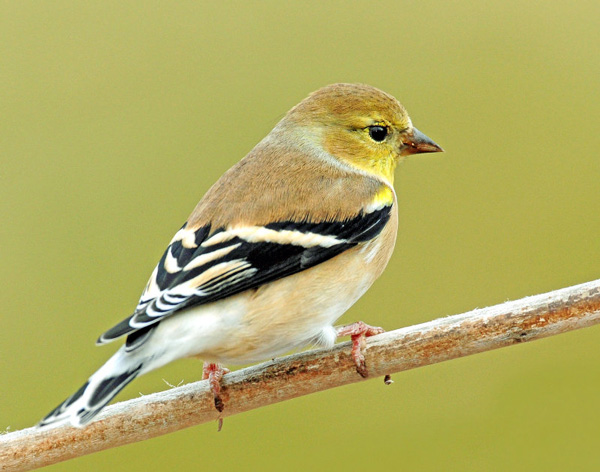 |
Male American Goldfinch
in December, by Paul Higgins
©Paul Higgins
The bill starts to change to a bright orange color.
|
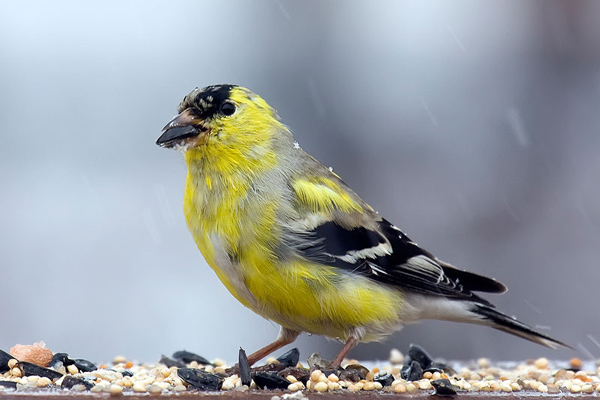 |
Molting
Male in April, by Kendall Brown
©Kendall Brown
The bright yellow feathers "immerge" in patches from
the
dull gray/brown body feathers of the winter plumage.
|
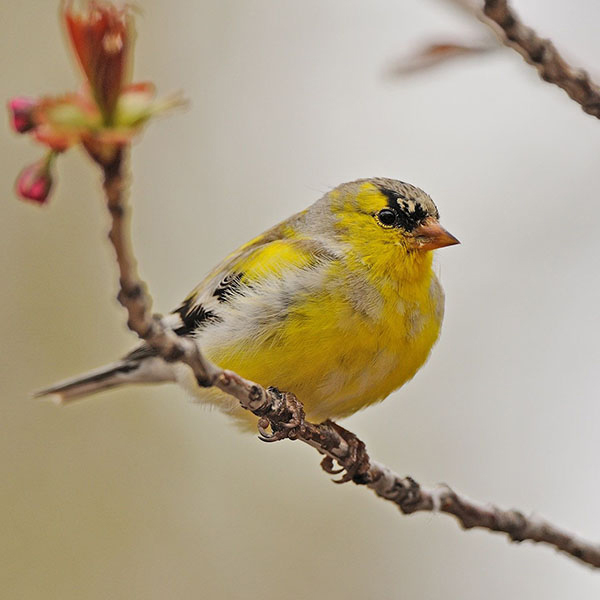 |
Partially molted
Male April, by John Crawley
©John Crowley
The bill becomes completely orange and the cap
gradually becomes black.
|
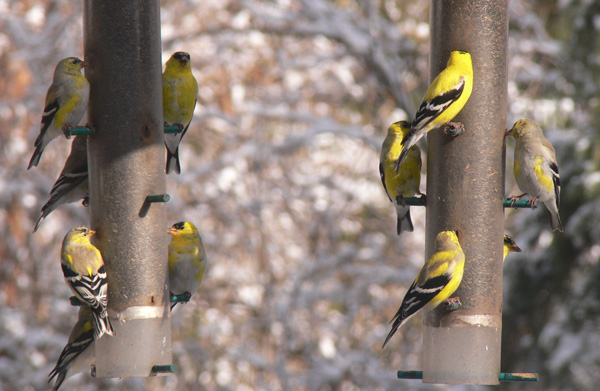 |
Varied plumages in April,
by Steve Carr ©Steve
Carr
In the month of April American Goldfinches are in different
stages of molt.
|
 |
Female in June, by Paul Higgins
©Paul Higgins
The outcome for the Female is tasteful yellow and white
body feathers
with a bright yellow-orange bill.
(Saving some energy for egg-laying and nesting)
|
 |
Male
in May, by John Crowley
©John Crowley
The Male is certainly stunning with his
bright yellow body feathers,
a black top hat stylishly tilted forward and eye-catching
black and white wings.
(Holding nothing back for his big chance to attract a mate).
|
|
After a Summer of nesting, a complete molt begins whish includes not only
the body feathers,
but a gradual wing and tail feather mold as well, which happens one feather
at a time on each wing
and each side of the tail tail so the bird can still fly during this
process.
|
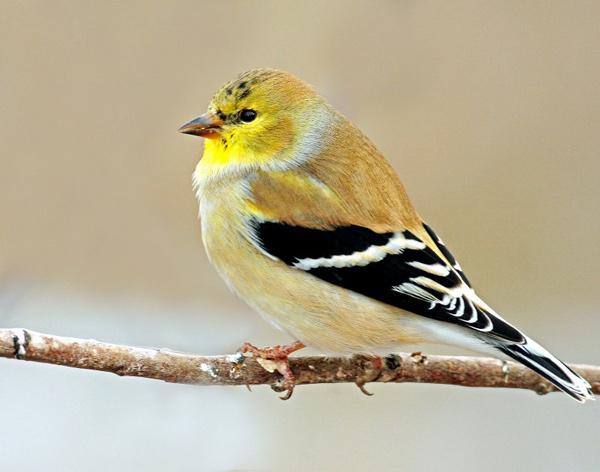 |
Male
in December, by Paul Higgins
©Paul Higgins
By December the bill is almost dark again and the back is
almost all brown/gray and the cap is almost gone.
He's ready to settle down for the winter in the leafless
trees.
|
The variety of things that birds do to
attract a mate is quite astounding:
strutting male
Sage Grouse on a lek, swimming-tiptoe duets by
Clark's
and
Western Grebes,
Gray
Catbirds learning over 400 different song phrases to
serenade a mate,
the mating dances of
Sandhill Cranes, the winnowing flight of a
Wilson's Snipe, and --
one we can observing in our own backyards -- the Molt of the
American Goldfinch.
Each is spectacular in its own way. |
|